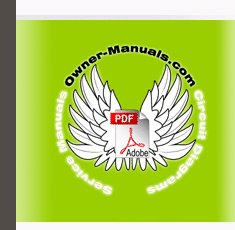|
|
|
Categories
|
|
Information
|
|
Featured Product
|
|
|
 |
|
|
There are currently no product reviews.
 ;
The service manual was complete and the components on the drawings very good visible.
 ;
downloaded next day , manual is very helpful , fast and easy
 ;
This Service Manual was exactly what I needed to repair my Philips TV. The purchase was convenient and I received the manual at the same day I paid for it.
 ;
Very pleased with the whole process. Great commication and very easy instructions to order and to download the manual.
 ;
It's a good manual, this one it's a scan from the original factory service manual, great quality 100% readeable. definetely it worths what I paid for.
2.6.2 Adjustment of the Tension Arm and Pad Arm Assemblies Use Fig. 2-6-2 as the reference unless otherwise specified. 1. Set the PLAY mode. Se Fig. 2-3-8. 2. Loosen the screw A . 3. With the take-up side at the bottom, align the extreme end of the Tension Arm Assembly with the crossed grooves on the screw B that retains the Loading Motor Assembly and then tighten the screw A . The tightening torque should be 0.069 N�m (0.7 kgf�cm). 4. Check the operation. Repeat unloading and loading several times and make sure that the Tension Arm Assembly is located within the normal range. Note : With the above checking method, a Torque Meter is not used. When a Torque meter is used, the following are the reference values: Back Tension : 1.96 to 5.88 mN�m x 0.1 (2 to 6 g�cm) Play Torque : 6.86 to 10.78 mN�m x 0.1 (7 to 11g�cm)
SCREW B TENSIOM ARM ASSY
2, 3 SCREW A
Fig. 2-6-2
2.6.3 Adjustment of the Slide Lever 2 Use Fig. 2-6-3 as the reference unless otherwise specified. 1. Set the C IN mode. See Fig. 2-3-4. 2. Loosen the screw A . 3. Set the Main Deck and Slide Deck Assemblies apart so that they do not rattle, then tighten the screw A by screwing it fully toward the Drum Assembly. The tightening torque should be 0.069 N�m (0.7 kgf�cm). 4. Check the operation. Repeat unloading and loading several times and make sure that these operations can be performed smoothly without producing rattles.
3
2, 3 SCREW A
3
Fig. 2-6-3
2-16
|
|
 |
> |
|
